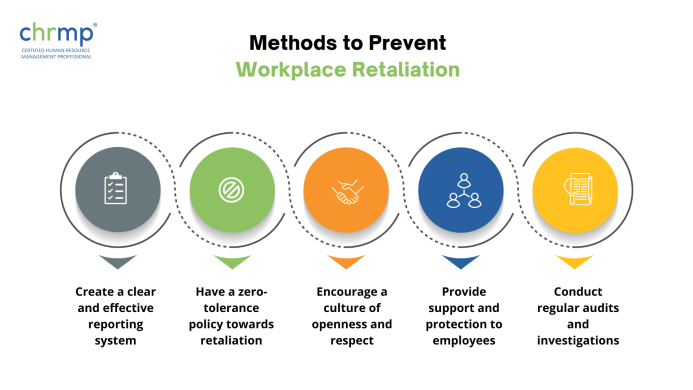
How to Hire Your First Employee (for Small Businesses): Your Step-by-Step Guide
Taking the leap to hire your first employee is one of the most exciting – and often daunting – milestones for any small business owner. It signals growth, success, and the recognition that you can’t do it all alone. But for many, the thought of navigating payroll, legal requirements, and finding the "perfect fit" can feel overwhelming.
Don’t worry, you’re not alone! This comprehensive guide is designed to break down the entire process into easy-to-understand steps, helping you confidently hire your first employee for your small business and set them – and your business – up for success.
Is It Time to Hire Your First Employee? (The "When" Question)
Before you even think about job descriptions, the first crucial step is to honestly assess if your small business is ready to hire. It’s a significant investment, so you want to ensure it’s the right move at the right time.
Signs You’re Ready to Expand Your Team:
- You’re Constantly Overwhelmed: Are you working late nights, weekends, and still falling behind? If your to-do list never shrinks and you feel like you’re drowning in tasks, it’s a clear indicator.
- You’re Turning Down Opportunities: Are you saying "no" to new clients, projects, or expansion ideas because you simply don’t have the time or capacity? An employee can help you capitalize on these missed opportunities.
- Repetitive Tasks Dominate Your Day: Are you spending a significant amount of time on administrative, data entry, or other repeatable tasks that don’t directly generate revenue? These are perfect candidates for delegation.
- Your Core Business is Suffering: If you’re so busy with day-to-day operations that you can’t focus on strategic planning, marketing, or client relationships, your business growth might be stifled.
- You Have Consistent Revenue: While not a hard and fast rule, having a stable and predictable income stream is vital to ensure you can consistently afford to pay your new team member.
The Cost-Benefit Analysis:
Hiring isn’t just about salary. It involves a range of expenses. Weigh these against the benefits:
- Costs: Salary, employer taxes (Social Security, Medicare, unemployment), workers’ compensation insurance, benefits (health, dental, PTO), training time, potential software/equipment.
- Benefits: Increased productivity, ability to take on more clients/projects, improved customer service, reduced owner stress, new ideas and perspectives, specialized skills, and ultimately, business growth.
If the benefits clearly outweigh the costs, and you’re feeling the strain, it’s likely time to take the plunge.
Phase 1: The Groundwork – Preparing to Hire
Once you’ve decided it’s time, resist the urge to immediately post a job ad. A little preparation goes a long way in ensuring you find the right first employee and avoid common pitfalls.
1. Define the Role: What Exactly Do You Need?
This is perhaps the most critical step. Don’t just hire "help." Get crystal clear on the specific tasks and responsibilities this person will undertake.
- List All Delegatable Tasks: Go through your typical week or month. What tasks do you dread? What takes up too much time? What could someone else do?
- Examples: Social media management, invoicing, customer service inquiries, data entry, scheduling appointments, content creation, order fulfillment, basic bookkeeping.
- Identify Core Responsibilities: Based on the tasks, what will be their primary duties?
- Determine Necessary Skills & Qualifications:
- Hard Skills: Specific software proficiency (e.g., QuickBooks, Canva, CRM), writing skills, technical knowledge.
- Soft Skills: Communication, problem-solving, organization, initiative, adaptability, customer service.
- Experience Level: Do you need someone entry-level, experienced, or an expert?
- Craft a Clear Job Description: This will be your roadmap for recruitment. It should include:
- Job Title
- Brief Company Overview
- Summary of the Role
- Key Responsibilities
- Required Skills and Qualifications
- Desired Attributes (e.g., "self-starter," "detail-oriented")
- Reporting Structure (who they report to)
- Work Environment (remote, in-office, hybrid)
2. Budget for Your New Employee (Beyond Just Salary)
This is where many first-time employers underestimate the true cost. Budgeting for your first employee needs to be comprehensive.
- Gross Salary: What’s a competitive wage for this role in your area? Research industry averages.
- Employer Taxes:
- FICA Taxes: You, as the employer, pay half of Social Security (6.2%) and Medicare (1.45%) taxes, matching your employee’s contribution. (Total 7.65% of wages).
- FUTA (Federal Unemployment Tax Act): Generally 0.6% on the first $7,000 of wages, though state unemployment taxes often offset this.
- SUTA (State Unemployment Tax Act): Varies significantly by state and employer history.
- Workers’ Compensation Insurance: Mandatory in most states, this covers medical costs and lost wages for employees injured on the job. Rates vary by industry and risk level.
- Benefits: While not always mandatory for a first employee, offering benefits like paid time off (PTO), health insurance, or a retirement plan can attract better talent and boost morale. Even small perks like a monthly stipend for wellness or professional development can make a difference.
- Software & Tools: Will they need a new laptop, specific software licenses, or access to your existing tools?
- Training Costs: Factor in your time spent training them, and potentially any external training courses.
Pro Tip: As a rough rule of thumb, budget an additional 20-40% on top of the gross salary to cover taxes, insurance, and basic benefits.
3. Understand Legal & Compliance Requirements
This is the least exciting but most critical part. Skipping these steps can lead to hefty fines and legal headaches. Legal requirements for hiring a first employee vary by state and federal law.
- Obtain an EIN (Employer Identification Number): This is like a Social Security number for your business, issued by the IRS. You’ll need it for tax purposes. Apply for free on the IRS website.
- New Hire Paperwork:
- Form I-9, Employment Eligibility Verification: Confirms your employee is legally authorized to work in the U.S. You must complete this within three days of their start date and keep it on file.
- Form W-4, Employee’s Withholding Certificate: Used by your employee to tell you how much federal income tax to withhold from their pay.
- State Tax Withholding Forms: Many states have their own versions of the W-4.
- State New Hire Reporting: Most states require you to report new hires to a state agency within a few days of their start date. This helps with child support enforcement.
- Workers’ Compensation Insurance: As mentioned, mandatory in most states. Secure coverage before your employee starts.
- Unemployment Insurance: You’ll contribute to state unemployment insurance funds.
- Understand Labor Laws:
- Minimum Wage: Federal and state minimum wage laws apply. Pay at least the higher of the two.
- Overtime: For non-exempt employees, you generally must pay 1.5 times their regular rate for hours worked over 40 in a workweek.
- Discrimination Laws: Familiarize yourself with federal laws (Title VII of the Civil Rights Act, ADA, ADEA) that prohibit discrimination based on protected characteristics.
- Payday Requirements: States have laws on how often you must pay employees.
- Breaks and Meal Periods: Some states mandate paid or unpaid breaks.
- Employee Handbook (Recommended): While not legally required for a first employee, a simple employee handbook outlines your company’s policies, expectations, and benefits. This sets clear boundaries and expectations from day one. You can find many templates online.
Don’t be intimidated: Many small business HR and payroll solutions can help you navigate these complexities.
4. Set Up Your HR Infrastructure
You need systems in place to manage your new team member.
- Payroll System: This is essential. Options include:
- Full-Service Payroll Providers: Gusto, ADP, Paychex, QuickBooks Payroll. These automate tax calculations, filings, and direct deposits, greatly simplifying the process. Highly recommended for beginners.
- Accountant/Bookkeeper: Your existing professional may offer payroll services.
- Manual (Not Recommended): Trying to do payroll manually is error-prone and time-consuming.
- Record Keeping: Have a secure system for storing employee files (I-9s, W-4s, offer letters, performance reviews, etc.). Digital solutions are often best.
Phase 2: Finding Your Person – Recruitment & Selection
With your foundation laid, it’s time to actively find the right first employee.
1. Where to Look for Candidates
- Online Job Boards:
- Indeed: Very popular and often offers free postings, making it great for small businesses.
- LinkedIn Jobs: Good for professional roles, allows you to leverage your network.
- Glassdoor: Combines job listings with company reviews.
- Industry-Specific Boards: Look for sites tailored to your niche.
- Social Media:
- LinkedIn: Share your job posting on your personal and company pages.
- Facebook Groups: Many local business or industry-specific groups allow job postings.
- Instagram/TikTok: If your target demographic is younger or your business is visually driven, creative posts can attract talent.
- Your Network: Tell everyone you know you’re hiring! Referrals often lead to high-quality candidates.
- Local Colleges/Universities: Great for internships or entry-level positions.
- "We’re Hiring" Sign: For brick-and-mortar businesses, a simple sign in your window can be effective.
2. Screening Applications
You might receive many applications. Here’s how to efficiently filter them:
- Resume Review: Look for keywords from your job description, relevant experience, and clear communication.
- Cover Letters: Do they address your company specifically? Do they explain why they’re a good fit for this role?
- Quick Phone Screen: A 10-15 minute call can quickly weed out candidates who aren’t a good fit, clarify basic questions, and assess communication skills.
3. Conducting Effective Interviews
Interviews are your chance to assess skills, personality, and cultural fit.
- Prepare Questions in Advance:
- Behavioral Questions: Ask about past experiences that demonstrate skills (e.g., "Tell me about a time you had to solve a difficult customer problem." "How do you prioritize tasks when everything feels urgent?").
- Situational Questions: Present hypothetical scenarios relevant to the role (e.g., "What would you do if a client was unhappy with our service?").
- Skill-Based Questions: Test specific knowledge or abilities.
- Ask Open-Ended Questions: Encourage candidates to elaborate beyond "yes" or "no."
- Listen Actively: Pay attention not just to what they say, but how they say it.
- Assess Cultural Fit: Does their personality and work style align with your business values? Will they be a positive addition to your small team?
- Allow Them to Ask Questions: This shows engagement and gives you insight into their priorities.
- Be Consistent: Ask all candidates similar questions to ensure fair comparison.
- Take Notes: You’ll forget details if you don’t.
4. Checking References
Always check references! This is a crucial step that many small business owners skip.
- Ask for 2-3 professional references.
- Call past supervisors, not just friends or family.
- Ask specific questions:
- "What was [Candidate Name]’s greatest strength?"
- "What was an area where they could improve?"
- "How did they handle [specific challenge relevant to your role]?"
- "Would you hire them again?"
Phase 3: Making the Offer & Onboarding Your New Hire
You’ve found the right person! Now, it’s about making a clear offer and setting them up for success from day one.
1. Extend a Clear Offer Letter
A formal offer letter protects both you and the employee. It should include:
- Job Title
- Start Date
- Compensation (hourly wage or salary)
- Benefits (PTO, health insurance details, etc.)
- Reporting Manager
- Work Schedule and Location
- A clear statement that employment is "at-will" (if applicable in your state).
- Contingencies (e.g., "contingent upon successful background check, if applicable").
- A deadline for acceptance.
2. Complete New Hire Paperwork
Once the offer is accepted, gather all necessary documents before their first day or on the first day.
- Form I-9: Employee completes Section 1; you complete Section 2 after reviewing their acceptable identity and work authorization documents (e.g., driver’s license and social security card, or passport).
- Form W-4: Employee completes this to determine federal tax withholding.
- State Tax Forms: Any additional state withholding forms.
- Direct Deposit Authorization: Collect their bank information.
- Employee Handbook Acknowledgment: Have them sign to confirm they received and read your handbook.
- Confidentiality/Non-Disclosure Agreements (if applicable): Protect your business secrets.
- Emergency Contact Information: For safety.
3. Prepare for Their First Day
A positive first impression is key to retention and productivity.
- Set Up Their Workspace: Ensure their desk, computer, software access, and any necessary tools are ready.
- Communicate Internally: Inform existing team members (even if it’s just you!) that a new person is joining.
- Schedule First-Day Activities: Don’t just throw them into the deep end. Plan for:
- A warm welcome and introductions.
- A tour of the office/workspace (even if virtual).
- Review of the first day’s tasks and goals.
- Initial training on systems and processes.
- A planned lunch break.
4. Structured Onboarding & Training
Effective onboarding for your first employee is more than just paperwork. It’s about integrating them into your company culture and teaching them the ropes.
- The First Week:
- Focus on Culture & Values: Share your business’s mission, vision, and values. Help them understand why you do what you do.
- System Access: Ensure they have logins and passwords for all necessary platforms.
- Initial Training: Break down tasks into manageable chunks. Don’t overwhelm them with too much information at once.
- Regular Check-ins: Have daily brief meetings to answer questions and provide feedback.
- The First Month:
- Gradual Responsibility: Slowly introduce more complex tasks.
- Feedback Loop: Continue regular check-ins. Provide constructive feedback and encourage them to ask questions.
- Set Clear Expectations: Reiterate performance goals and how their role contributes to the business’s success.
- Ongoing Support: Make yourself available. Show patience. Remember, they’re learning your specific way of doing things.
Phase 4: Nurturing Your New Team Member for Long-Term Success
Hiring is just the beginning. To truly benefit from your new employee, you need to nurture the relationship.
- Communicate Regularly: Set up weekly or bi-weekly 1:1 meetings to discuss progress, challenges, and goals.
- Provide Feedback: Both positive reinforcement and constructive criticism are vital for growth.
- Empower and Delegate: As they become more proficient, trust them with more responsibility. Let go of tasks you’ve delegated.
- Foster a Positive Culture: Even with just one employee, you’re building a team. Encourage open communication, respect, and a supportive environment.
- Recognize Achievements: Acknowledge their hard work and contributions.
- Invest in Their Growth: Offer opportunities for learning and development, whether it’s an online course, a book, or a conference.
Common Pitfalls to Avoid When Hiring Your First Employee
- Rushing the Process: Don’t hire out of desperation. A bad hire can be more costly than no hire.
- Unclear Role Definition: Hiring someone without a clear job description leads to confusion and underperformance.
- Underestimating Costs: Only budgeting for salary is a recipe for financial strain.
- Skipping Legal Requirements: This is non-negotiable. Ignorance is not an excuse.
- Poor Onboarding: Leaving a new employee to fend for themselves leads to frustration and high turnover.
- Micromanaging: Trust the person you hired. Delegate effectively and let them do their job.
- Hiring for Skill Alone: Cultural fit and personality are equally important, especially in a small team.
Conclusion: Ready to Take the Leap?
Hiring your first employee for your small business is a pivotal moment. It’s an investment in your future, a sign of growth, and a step towards reclaiming your time and sanity. While the process involves many moving parts, by following this structured guide, you can approach it with confidence and clarity.
Remember, your first employee won’t just be a worker; they’ll be a partner in your business’s journey. Take your time, do your due diligence, and get ready to witness your small business reach new heights with the right person by your side. You’ve got this!



Post Comment